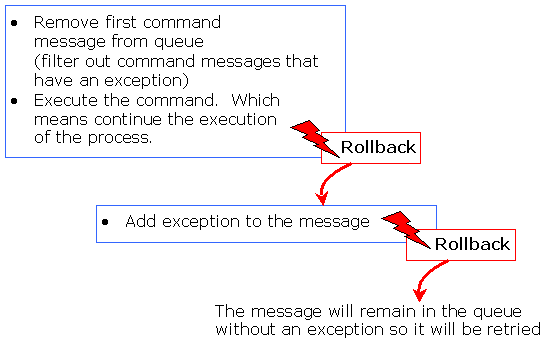When using jBPM's built-in asynchronous messaging, job messages will be sent by persisting them to the database. This message persisting can be done in the same transaction/JDBC connection as the jBPM process updates.
The job messages will be stored in the JBPM_JOB table.
The POJO command executor (org.jbpm.msg.command.CommandExecutor)
will read the messages from the database table and execute them. So the typical
transaction of the POJO command executor looks like this: 1) read next command message
2) execute command message 3) delete command message.
If execution of a command message fails, the transaction will be rolled back. After that, a new transaction will be started that adds the error message to the message in the database. The command executor filters out all messages that contain an exception.
If for some reason or another, the transaction that adds the exception to the command message would fail, it is rolled back as well. In that case, the message remains in the queue without an exception so it will be retried later.
Limitation: beware that jBPM's built-in asynchronous messaging system does not support multinode locking. So you cannot just deploy the POJO command executor multiple times and have them configured to use the same database.
